Abstract
Spike trains of spontaneous neuronal activity in the rabbit brain are submitted to statistical analyses based on the following pseudo-Markov model. The nerve cell is supposed to alternate between a bursting and a resting state. The numbers of consecutive spikes within each state are assumed to be independent integer-valued random variables with discrete probability distributions. Given the state, the interspike intervals are independent real-valued random variables. The two state semi-Markov model is obtained as a special case when the discrete distributions are geometrical. Statistical second-order properties of recorded spike trains are compared with those predicted by the model on the basis of known first-order properties. For that purpose, serial correlation coefficients and intensity functions for spike trains produced by the model are computed. A comparison between observed and predicted results for the spontaneous activity of 17 brain cells yields a good fit in eight cells and discloses some salient features of the statistical structure in the activity of six other cells. By making it feasible to compute theoretical correlograms, the model may advance the understanding of empirical correlograms. The possibilities for integrating this statistical model of spike trains with a model of the mechanism of spike train production are discussed.
Full text
PDF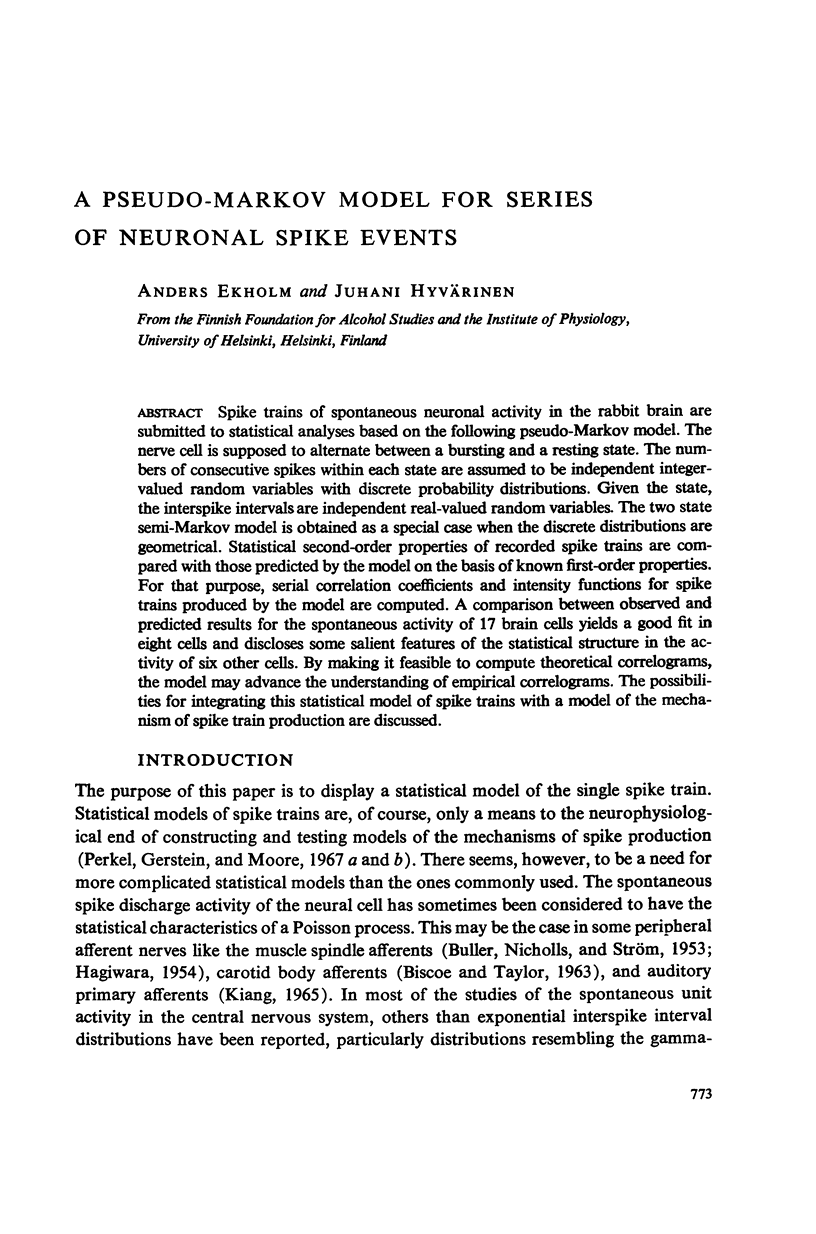
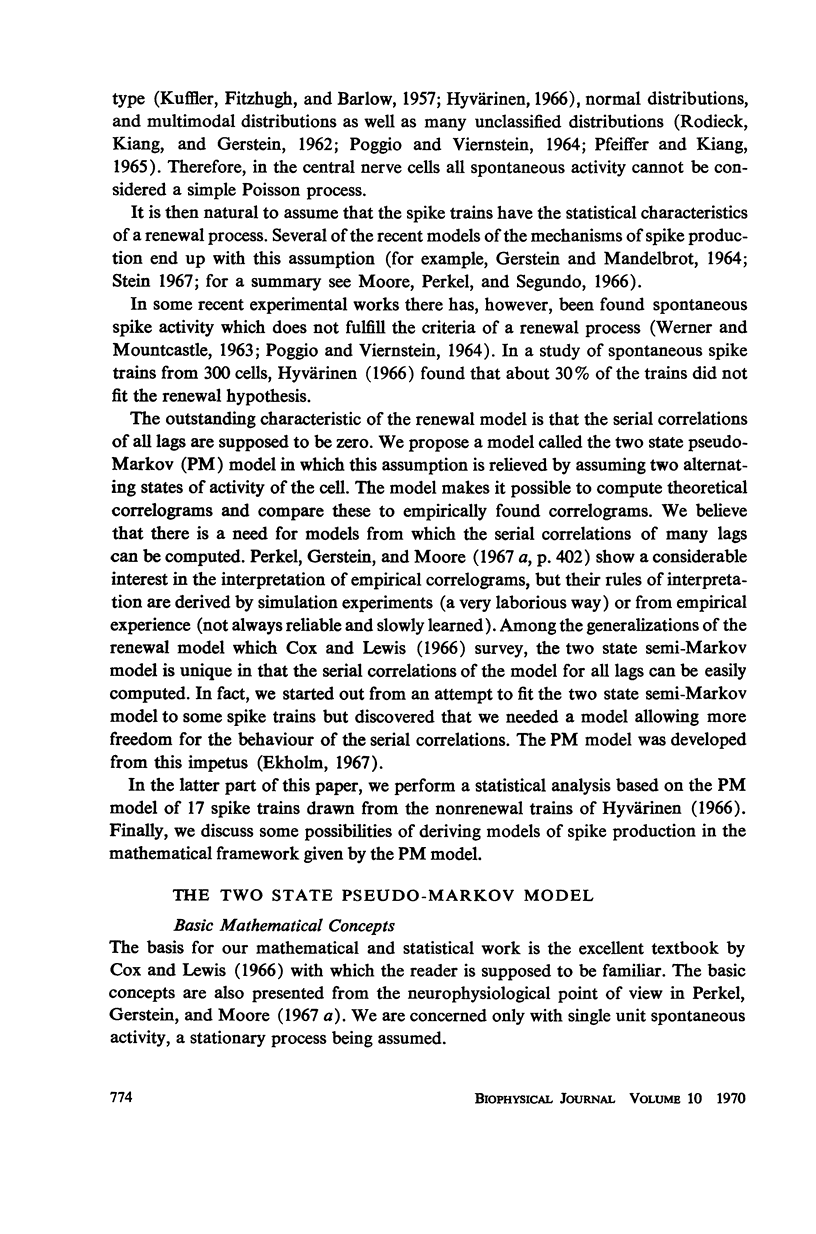
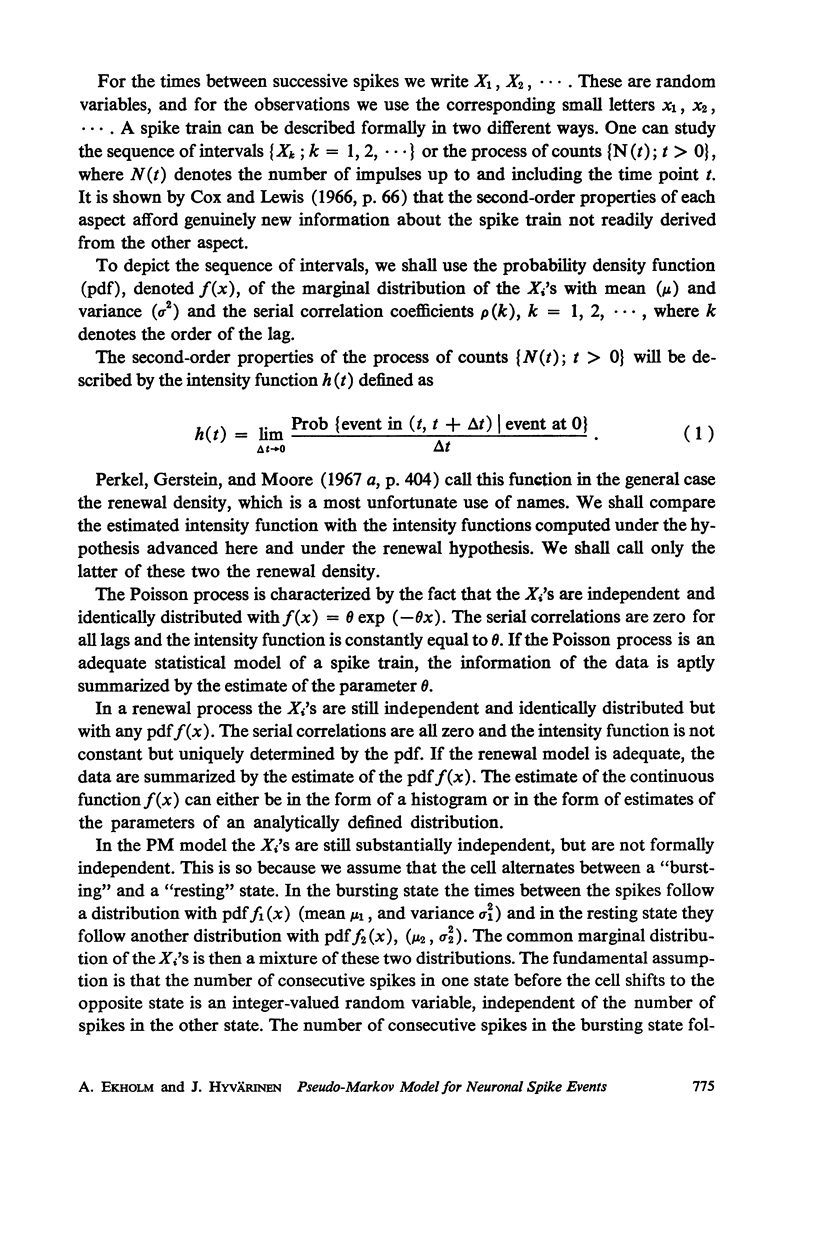




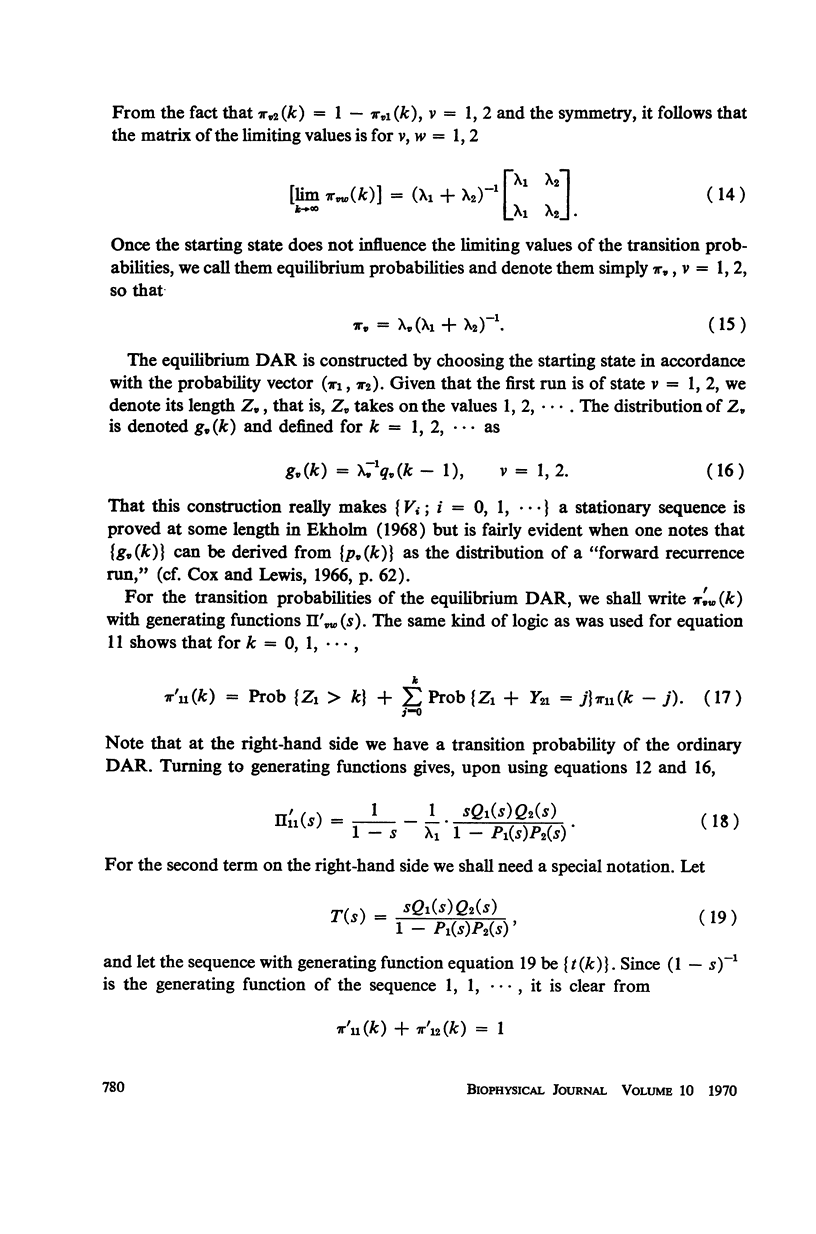

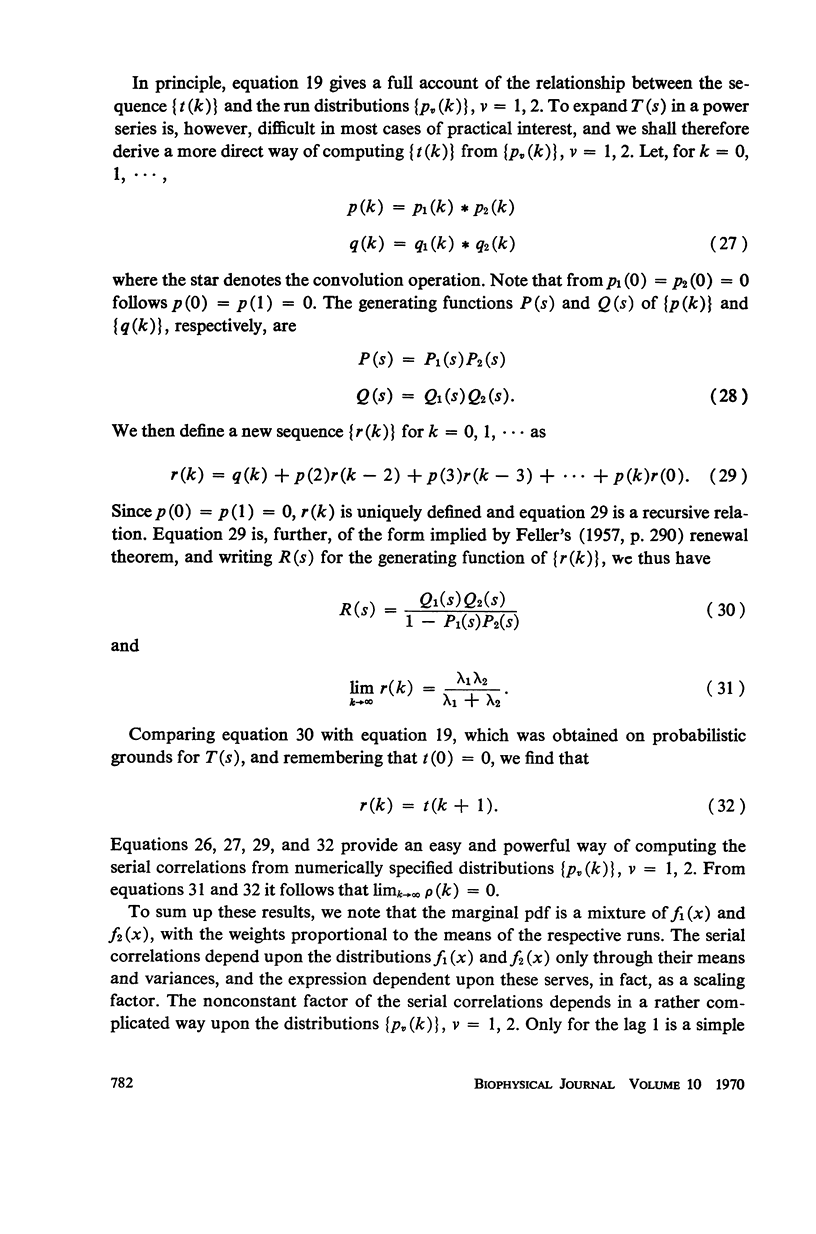


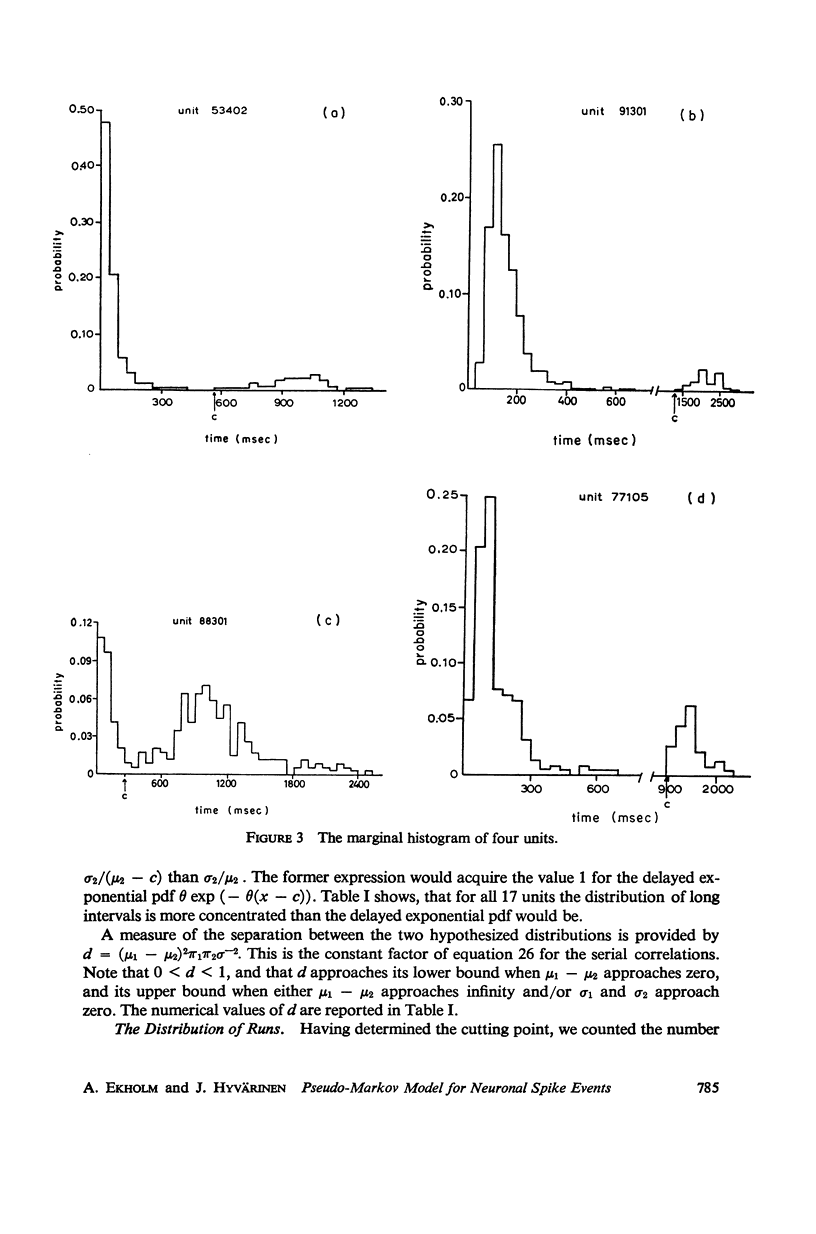
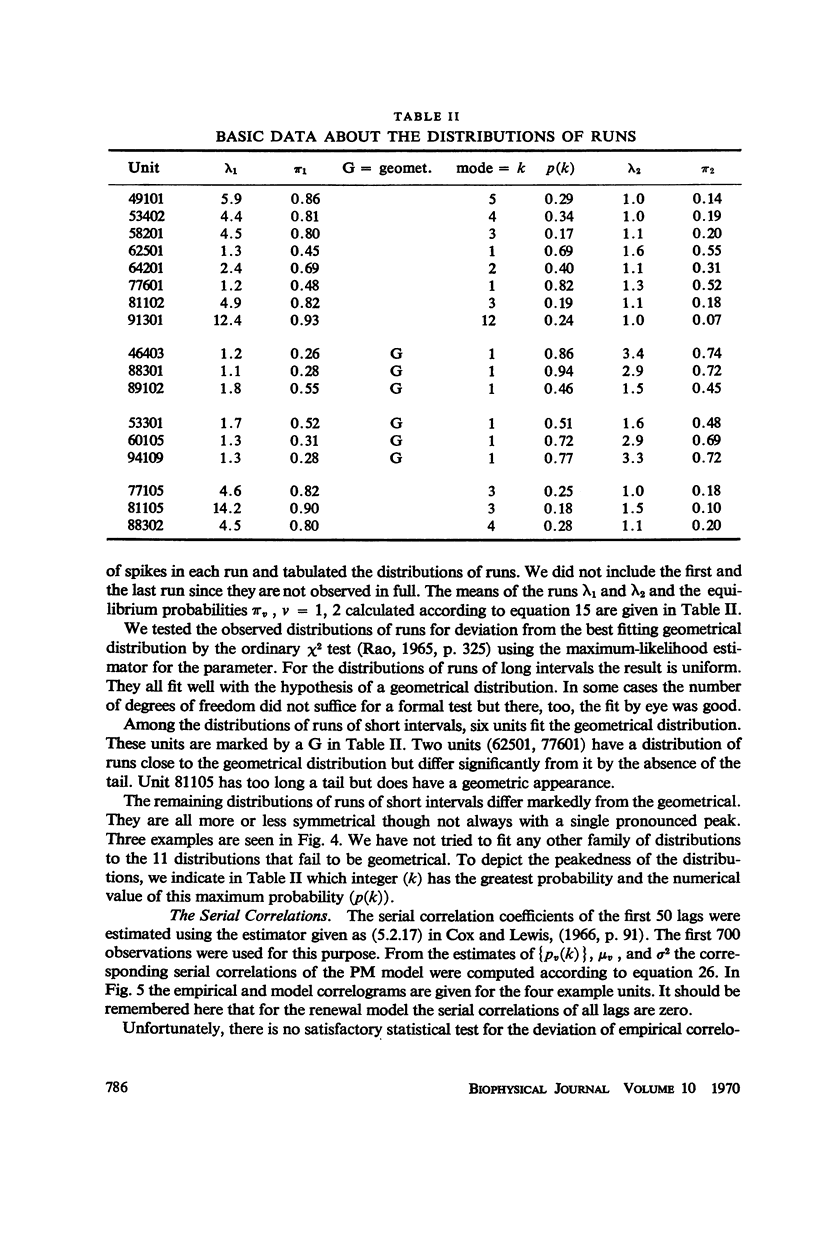

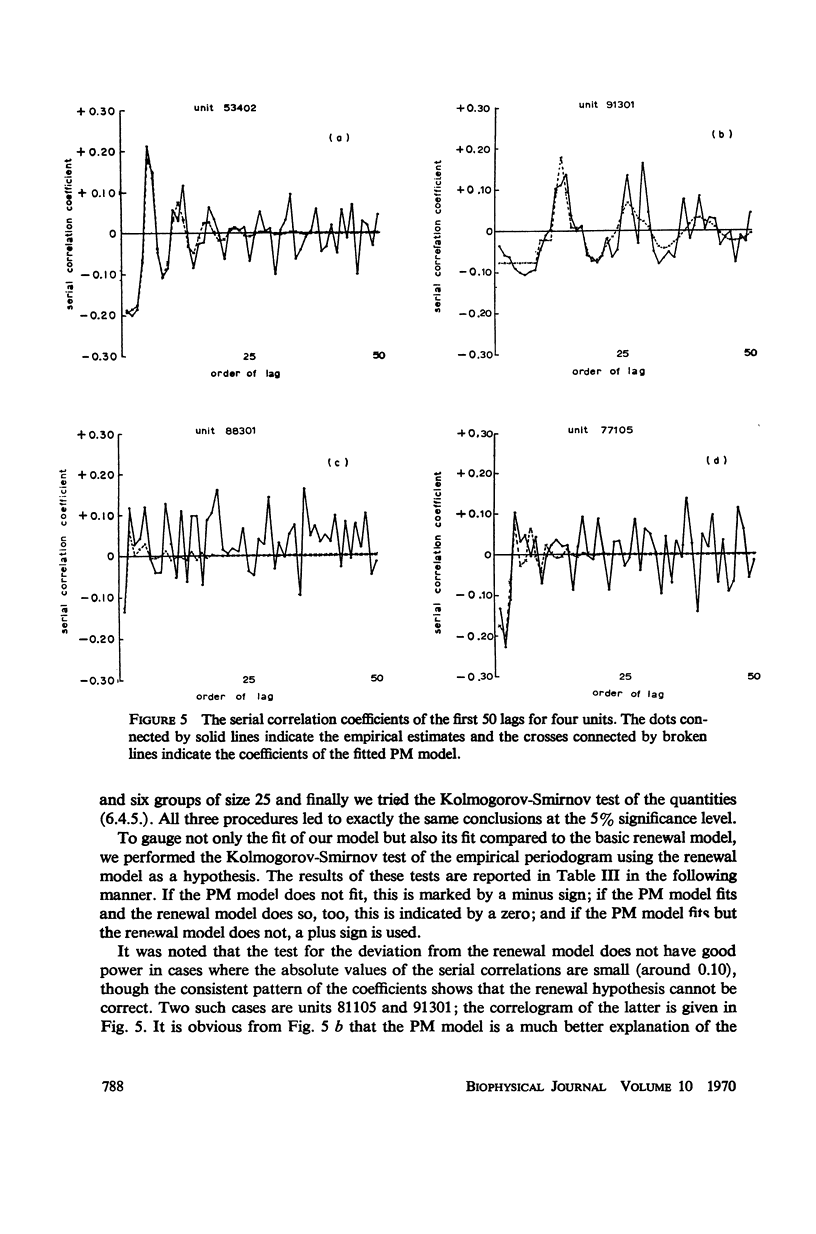
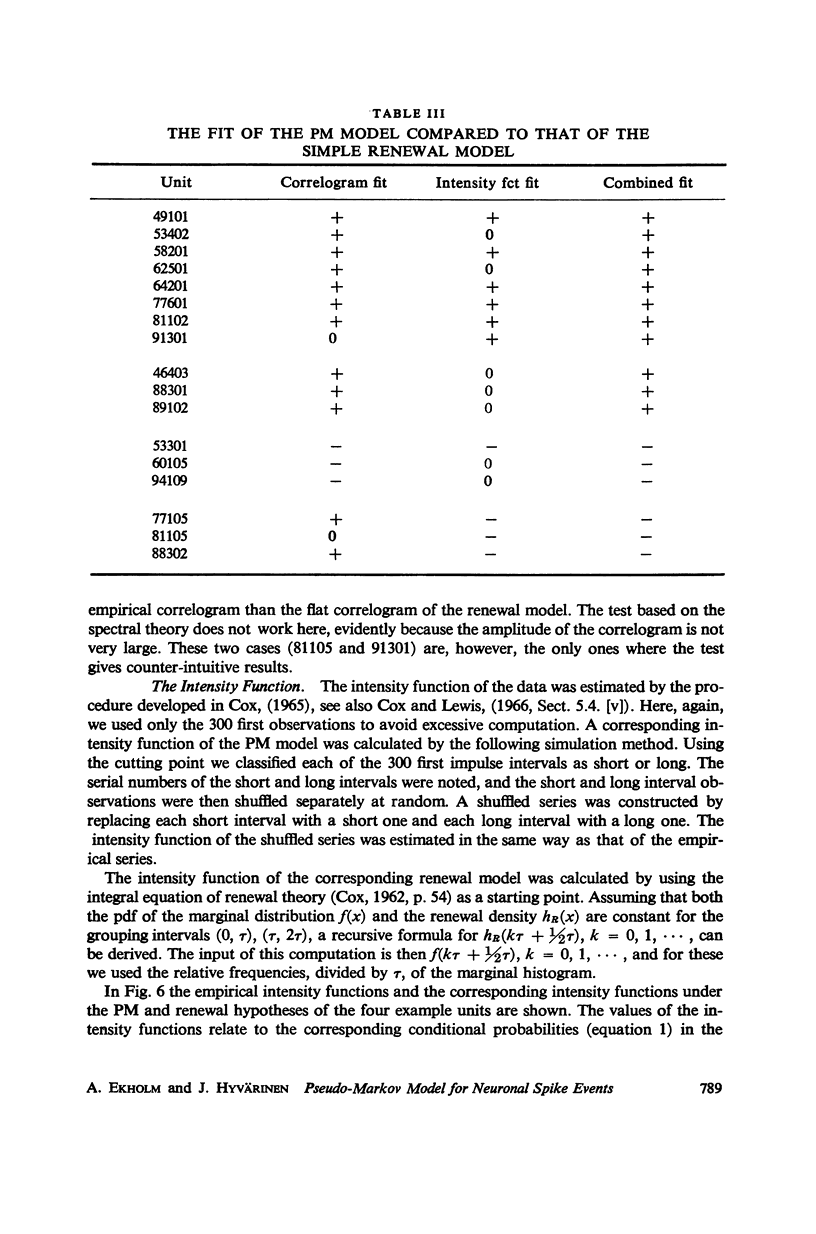
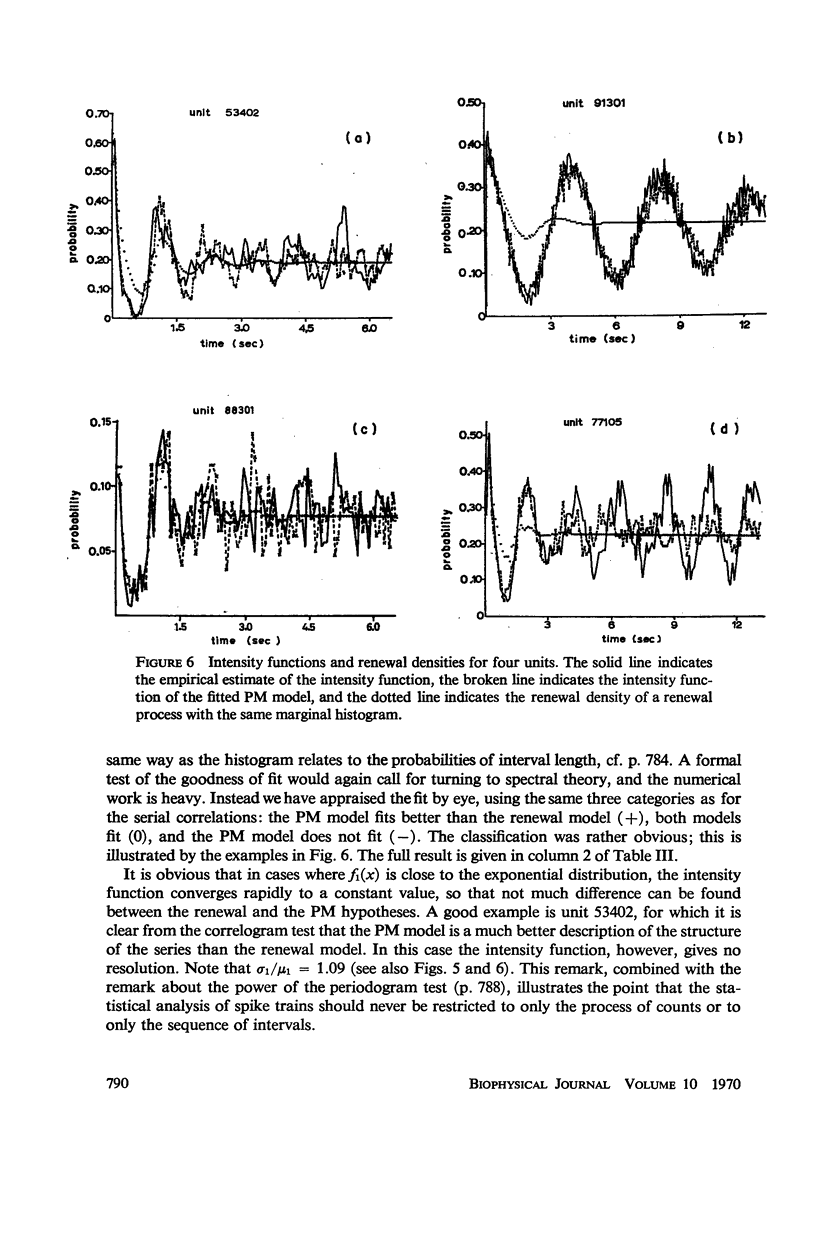
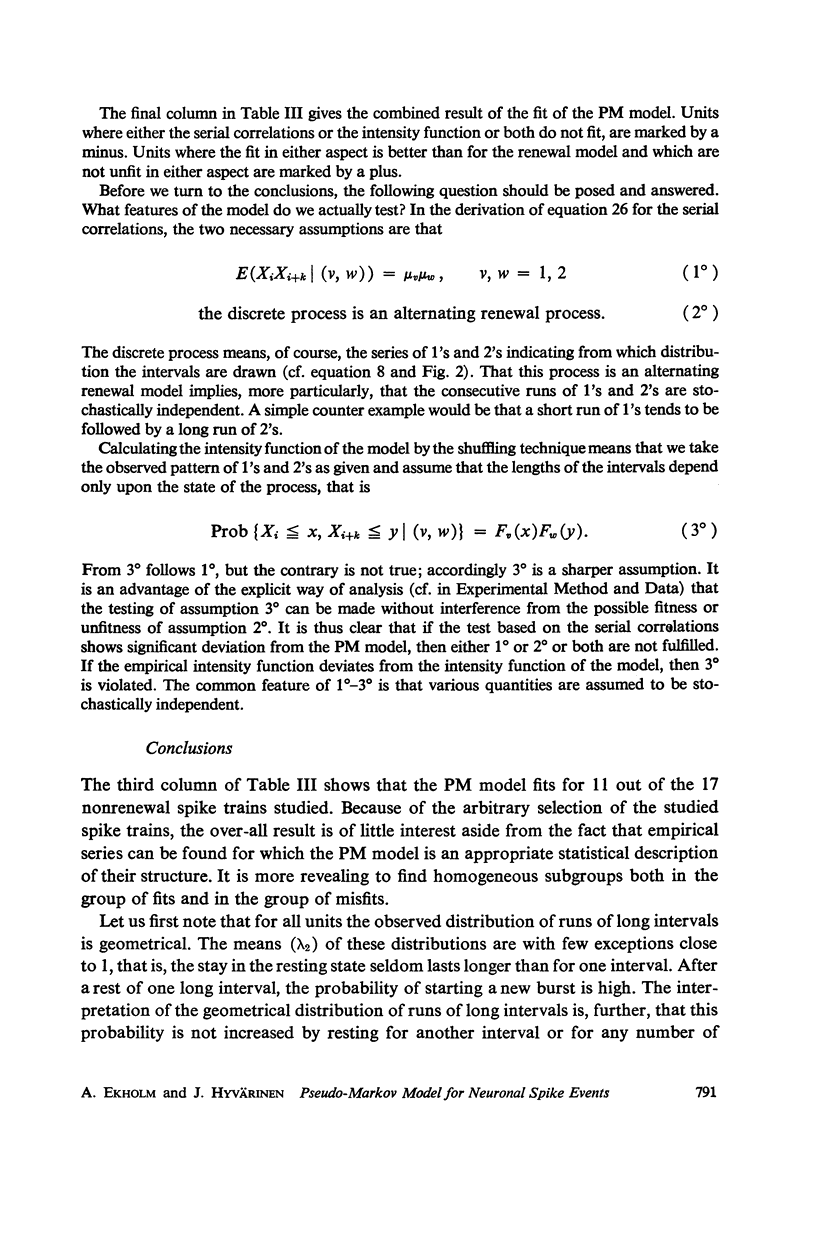
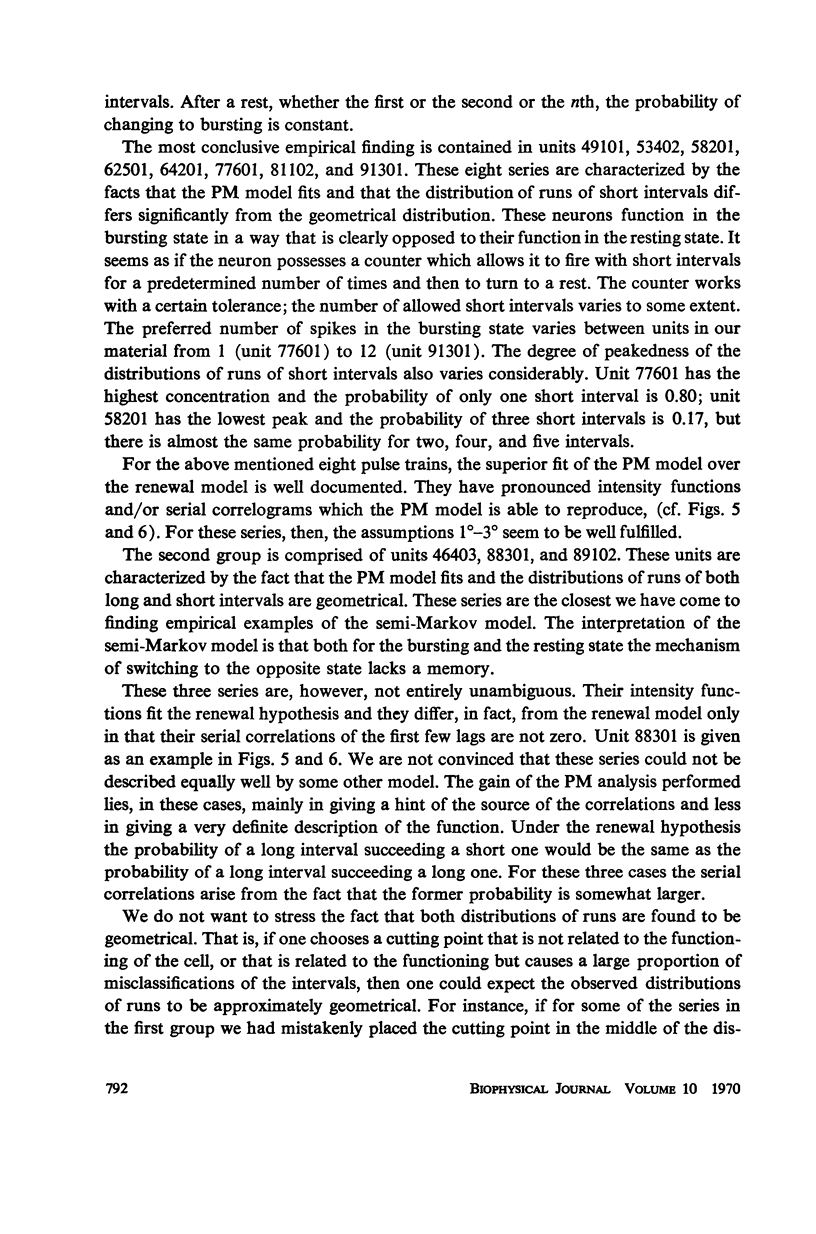


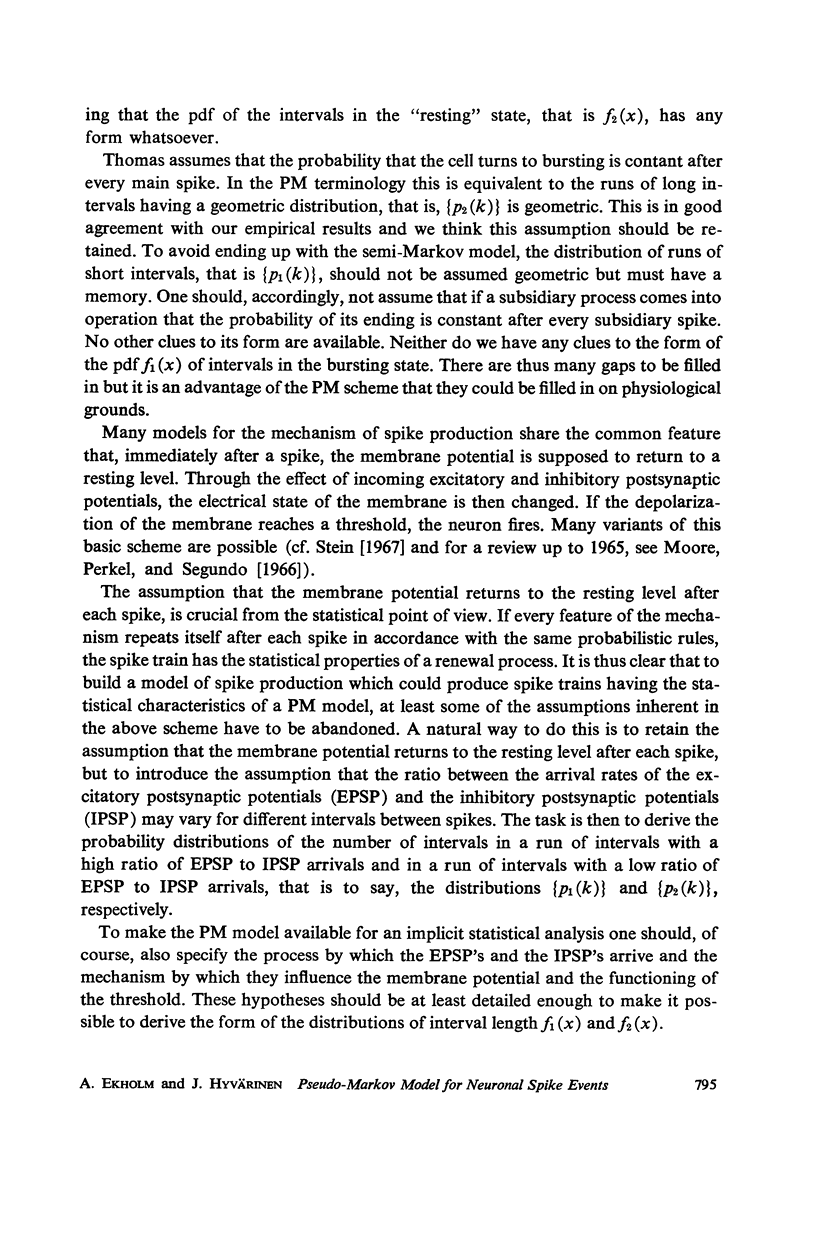
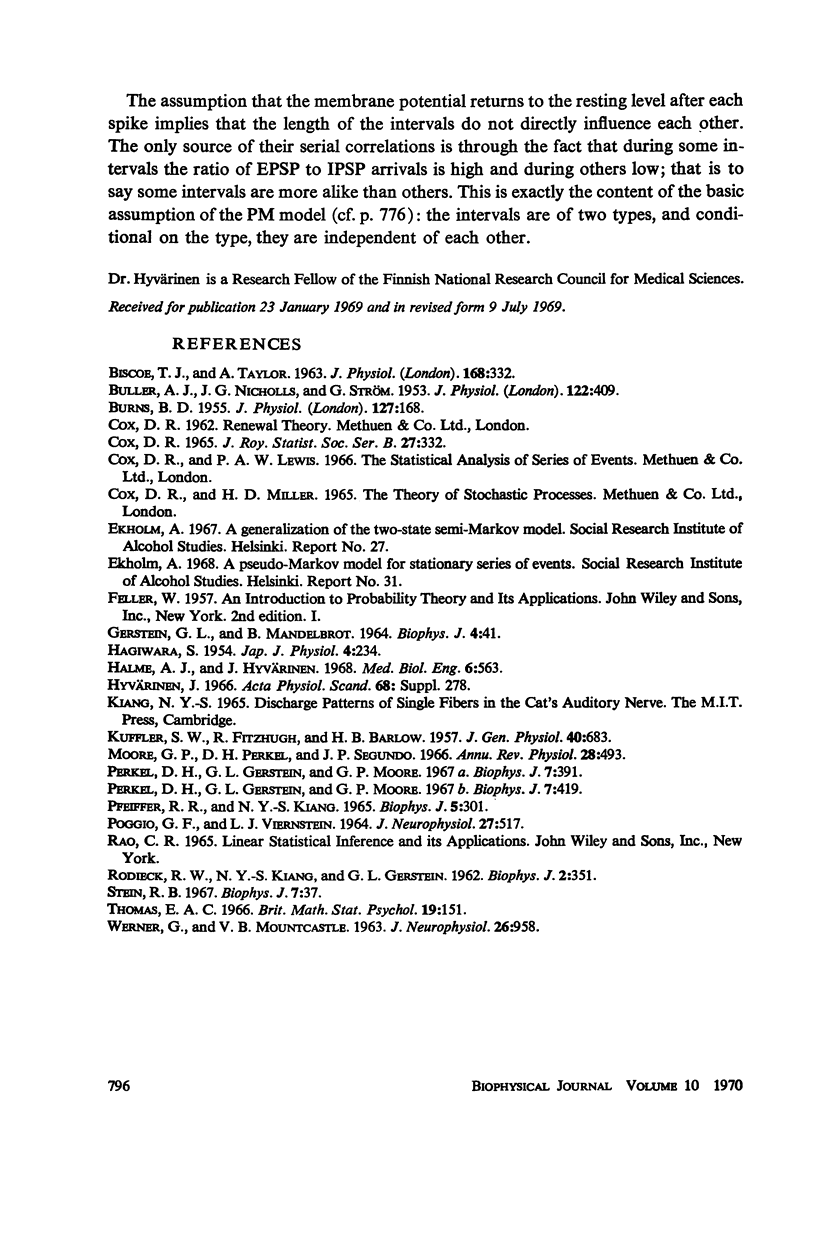
Selected References
These references are in PubMed. This may not be the complete list of references from this article.
- BULLER A. J., NICHOLLS J. G., STROM G. Spontaneous fluctuations of excitability in the muscle spindle of the frog. J Physiol. 1953 Nov 28;122(2):409–418. doi: 10.1113/jphysiol.1953.sp005011. [DOI] [PMC free article] [PubMed] [Google Scholar]
- Halme A. J., Hyvärinen J. Use of an ordinary general purpose computer for neuronal impulse interval measurment. Med Biol Eng. 1968 Sep;6(5):563–565. doi: 10.1007/BF02474300. [DOI] [PubMed] [Google Scholar]
- Moore G. P., Perkel D. H., Segundo J. P. Statistical analysis and functional interpretation of neuronal spike data. Annu Rev Physiol. 1966;28:493–522. doi: 10.1146/annurev.ph.28.030166.002425. [DOI] [PubMed] [Google Scholar]
- Perkel D. H., Gerstein G. L., Moore G. P. Neuronal spike trains and stochastic point processes. II. Simultaneous spike trains. Biophys J. 1967 Jul;7(4):419–440. doi: 10.1016/S0006-3495(67)86597-4. [DOI] [PMC free article] [PubMed] [Google Scholar]
- Pfeiffer R. R., Kiang N. Y. Spike Discharge Patterns of Spontaneous and Continuously Stimulated Activity in the Cochlear Nucleus of Anesthetized Cats. Biophys J. 1965 May;5(3):301–316. doi: 10.1016/s0006-3495(65)86718-2. [DOI] [PMC free article] [PubMed] [Google Scholar]
- RODIECK R. W., KIANG N. Y., GERSTEIN G. L. Some quantitative methods for the study of spontaneous activity of single neurons. Biophys J. 1962 Jul;2:351–368. doi: 10.1016/s0006-3495(62)86860-x. [DOI] [PMC free article] [PubMed] [Google Scholar]
- Thomas E. A. Mathematical models for the clustered firing of single cortical neurones. Br J Math Stat Psychol. 1966 Nov;19(2):151–162. doi: 10.1111/j.2044-8317.1966.tb00365.x. [DOI] [PubMed] [Google Scholar]
- WERNER G., MOUNTCASTLE V. B. THE VARIABILITY OF CENTRAL NEURAL ACTIVITY IN A SENSORY SYSTEM, AND ITS IMPLICATIONS FOR THE CENTRAL REFLECTION OF SENSORY EVENTS. J Neurophysiol. 1963 Nov;26:958–977. doi: 10.1152/jn.1963.26.6.958. [DOI] [PubMed] [Google Scholar]


